The first half of 2022 saw wine imports to China fall significantly from the previous year. As the climate which led to a downturn in consumption completed its metamorphosis in the final month of last year, 2023 brings renewed hope to an industry with massive growth potential.
According to Daxue consulting, China’s wine market blossomed by 28% between 2014 and 2018. This month, we have a conversation with Maximillian Postigo who has spent the past two decades in China and is firmly entrenched in the business side of China’s wine world.
According to Postigo, the wine industry in China is slated to grow by between 8% and 10% year-on-year for the next five years.

Postigo showcased Argentinian wines at Vinexpo in Hong Kong, circa 2014. Image via Maxi Postigo
Postigo grew up in Argentina, and recalls the ubiquitous presence of wine – or vino de mesa (table wine) as it’s called back home – in every household.
As a young boy, Postigo remembers lugging home hefty 5 liter glass jugs of local red wine called damajuana that were permanently perched on the kitchen table in every Argentinian home.
 Maxi Postigo with wife and child at Tapiz Winery in Mendoza, Argentina, circa 2014. Image via Maxi Postigo
Maxi Postigo with wife and child at Tapiz Winery in Mendoza, Argentina, circa 2014. Image via Maxi Postigo
Grape vines were introduced to Argentina at the hands of Spanish colonialists and missionaries in the 16th Century. By the 19th and 20th centuries, the Mendoza region was on its way to becoming one of the largest wine grape cultivating regions of the world.
Then everything changed in the late 1980s, when the government decided to implement a controlled denomination of origin (DOC) system similar to those found in France and Italy. The purpose of this system was to bolster and protect the wine industry as it stepped onto the world stage.
The law itself stated that wine must be made and bottled within 100 kilometers of where the grapes are grown, a policy change Postigo says caused more than 2,000 wineries to pop up all through the region.
The ensuing competitive perfectionism of estate winemaking elevated the quality of Argentinian wines to a level that could compete with the Old World masters. Postigo remembers his parents arguing in the supermarket about whether to buy a 5-liter damajuana of regular or reserva.
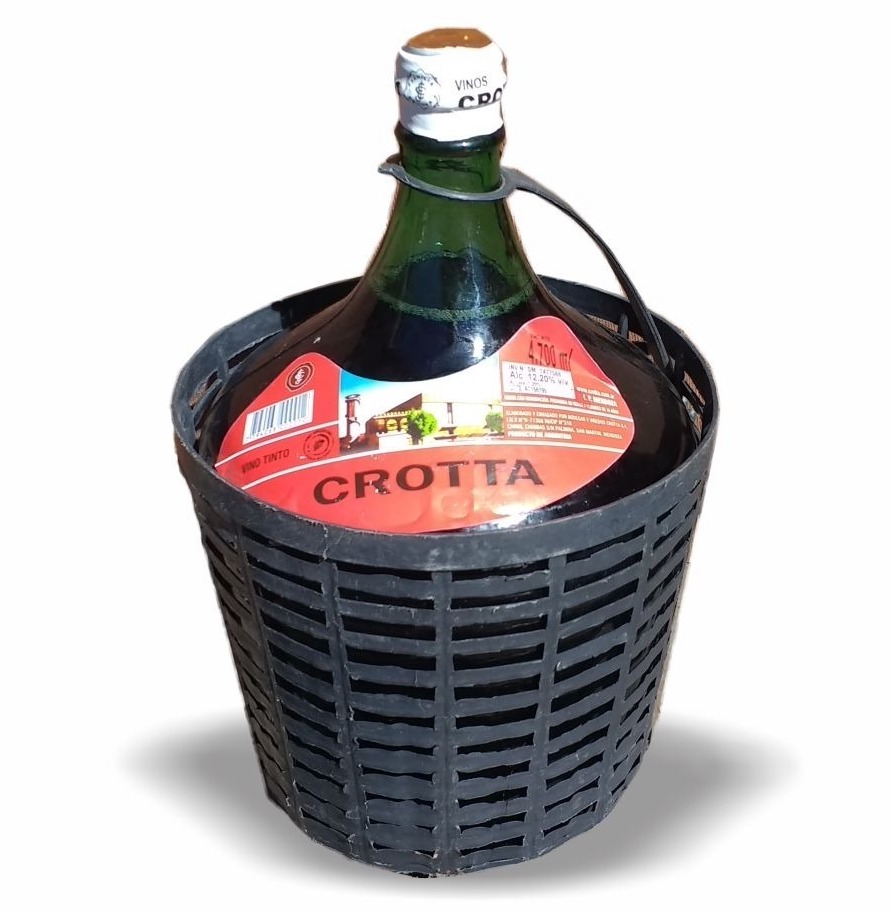
A damajuana is a 5L jug of wine. Image via Maxi Postigo
The Chinese market is expanding rapidly, but it is lacking this deeply engrained cultural relationship with wine. There is also an absurd amount of low quality wine in the market.
Postigo is adamant that the way for the Chinese consumer to develop an understanding of wine culture is by educating the customer.
“Chinese consumers are getting more and more sophisticated,” he tells That’s. “They are learning about wine very fast. There are apps like Vivino that can help you check if a wine is good or not, and learn about the winery and their story.
“We do three or four wine events every week in downtown Shanghai. China has 750 million middle-class consumers, and this number will grow to 900 million in the next five to seven years. The big question is how to reach the tables of China’s middle class with your wine.”
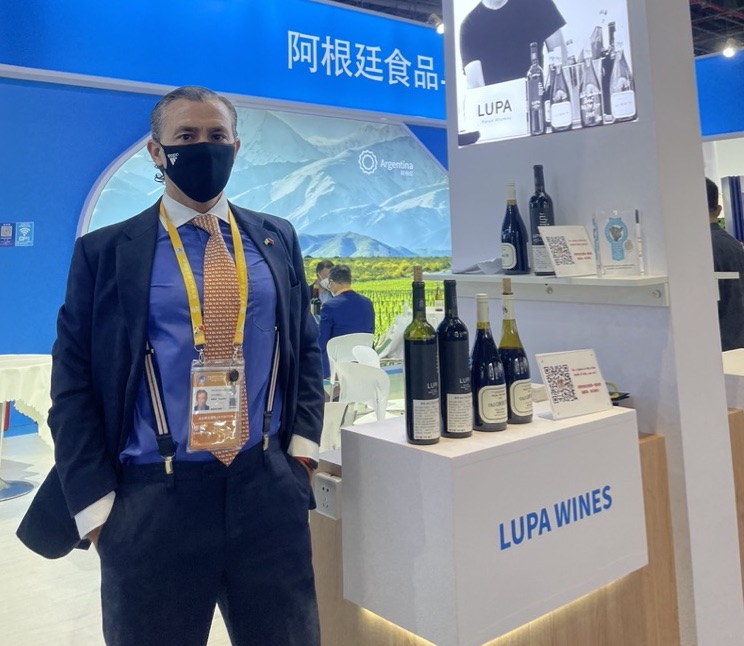
Postigo, pictured at the 2022 China International Import Expo, believes educating customers is crucial for building a customer base. Image via Maxi Postigo
In countries where wine has a place at the dinner table, retail sales account for 80-90% of bottles sold. In China, on the other hand, retail sales of wine account for only one in ten bottles.'
The majority of wine sales, according to Postigo, come from wine clubs and WeChat groups.
“This number is going to change very fast. In the next two or three years it will be 30-40% of bottles being sold in supermarkets and convenience stores. You can track this very easily just by taking a picture month after month of how many wines are available at the big supermarkets.”
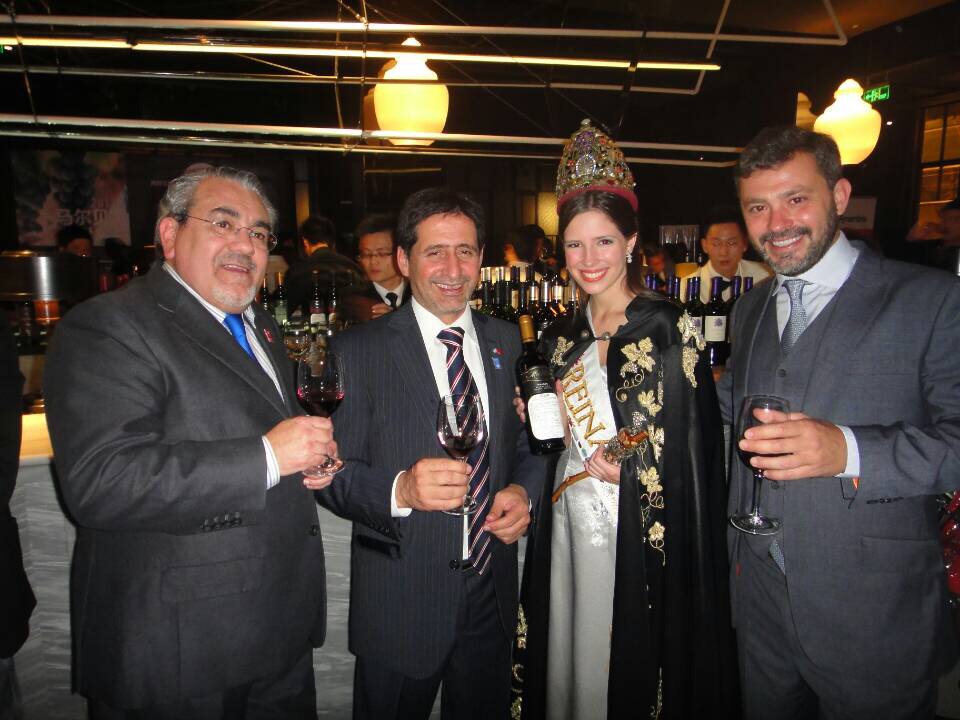
Postigo meeting the Argentina Consul General and Vendimia Queen in Shanghai, circa 2013. Image via Maxi Postigo
Postigo believes that price is a major factor, and the market price of wine in China is coming down.
“I recently had a meeting in Shanghai with wine producers from Ningxia. Some of the prices were around RMB200. Three or four years ago, a bottle of wine from Ningxia was not less than RMB400 to RMB500.”
Packaging is another realm of the wine industry that Postigo believes will see significant innovation as wine makes its move into Chinese households.
“Recently I gave a bottle of wine as a gift to a security guard in my compound to thank him for helping me with something. This guy is probably almost 50 years old and, when I handed him the bottle, he tried to twist the cork off with his hands.
“This is not a small issue, and it’s why a lot of winemakers who are eyeing the Chinese market are bottling their wines with screw caps.”
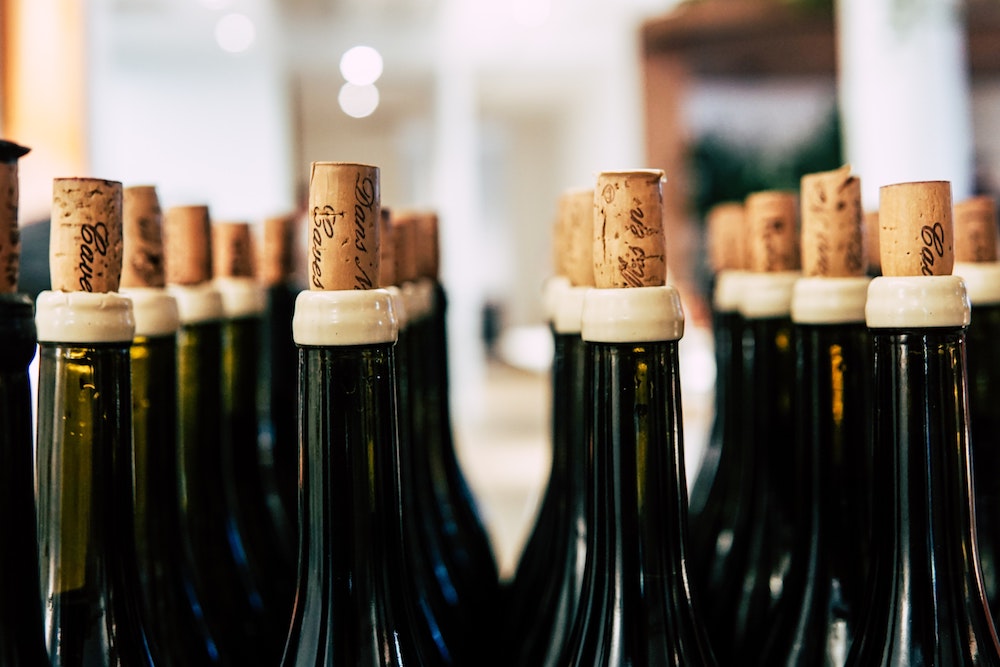
It is believed that 10% of natural corked wines are affected by cork taint. Image via Pexels
The debate between different wine bottle closures is longstanding. Corks, made from the bark of the cork oak tree, have reigned supreme as the preferred sealing method for wine bottles due to their natural properties.
Cork expands within the bottleneck, creating a perfect seal while still allowing a minuscule volume of air to pass through and interact with the wine. This allows for maturation of the flavors as the wine is aged in the bottle – thus cork is preferable for wines that are intended for cellar aging.
However, cork is also the villain of the wine world due to a chemical interaction that happens when chlorine mingles with certain naturally occurring fungi in wood and creates 2,4,6-trichloroanisole. This results in ‘cork taint’ which imbues an unpleasant taste and smell unto the wine, and is believed to affect nearly 10% of all wine sealed under natural cork.
There are several alternatives to natural cork, including agglomerated cork dust or synthetic corks made with other materials. Purists, however, adamantly scoff at the ability of these products to bring maturity to their wine.
According to Wine Enthusiast magazine, the director of an Australian winery commissioned the first aluminum screw cap for wine in 1964. Fast forward to today and it’s the sealing method of choice for the vast majority of producers in Australia and New Zealand.
Even premium reserve wines from Penfolds, which retail in Australia for triple digit prices, are sealed with aluminum screw caps. Those same wines, ironically, are sealed with cork for select international markets due to the perception that screw caps are for ‘cheap’ wines.
Postigo also notes the place of ‘bag-in-box’ wines, for which he has inked deals in China. Boxed wine is preferable for restaurants as wine can be dispensed by the glass and the sealed bladder effect greatly slows the oxidization process, thus reducing waste.
Volume will also be a consideration in wine’s evolution for the Chinese market.
“In China, you have a lot of single men and women and young families,” says Postigo. “If you have to go to work the next day, maybe you don’t want to drink four or five glasses of wine. Retail shops today are selling a few small bottles of wine, but this market is very big.”

Tiansai vineyards is offering a 'week's wine' package of 7x 187ml bottles in a variety of their wines. Image via JD.com
In addition, wine is being sold to wine drinkers rather than as a high-status gift. This means that affordable wines of higher quality are pushing out the low quality wines being sold at a premium behind the guise of famous winemaking regions.
Counterfeit wines, Postigo believes, are dying in the market as regulators clamp down and consumers become more aware and equipped and educated.
Bordeaux was granted geographical identification status in the Chinese market in 2012, a major step forward in protecting wineries in the booming Chinese market.
In July 2013, EU representatives met with regulators in Beijing to address China’s massive counterfeit wine problem.
The following month, police in Yanti seized more than 40,000 bottles of fake French wine from top tier Bordeaux vineyards like Chateau Lafite Rothschild, Chateau Latour and Chateau Mouton Rothschild, valued at USD 32 million.
The battle, however, remains ongoing.

Police seized more counterfeit Penfolds wine in a raid in 2021. Image via @湖北经视/Weibo
In 2015, the Shenzhen Entry-exit Inspection and Quarantine Bureau claimed to have developed a new system which could determine the legitimacy of imported wines by verifying the chemical make-up of the wines and match the stable isotopes and minerals to the exact place of origin.
A coordinated raid on warehouses in 2017 saw authorities seize another 14,000 bottles of fake Australian Penfold’s in warehouses in Shanghai and Xiamen. The wine was being sold at a significant discount to the normal retail price, and police said that RMB1.2 million of the wine had been sold through an online store to KTVs and bars in the four months prior to the sting.
READ MORE: 14,000 Fake Bottles of Wine Seized in Shanghai and Xiamen
Postigo believes that all consumer industries are growing in China and that there are three factors which are most important for those venturing into the market.
Firstly, he says to source products at fair prices; not cheap, but understand the actual prices of the goods and market them accordingly.
Secondly, be very strict with internal business expenses.
“Number three,” Postigo says, “you need to have a plan. If you resolve to be small, that’s not a problem. But you need to know that you’re going to be small.
“In China, you have the opportunity to be big, but you need to have the resources to be big and the partners to be big.”
When ordering shipments of wine to China, Postigo has a rule of thumb to ensure that he is servicing the consumers in that rapidly growing middle class.
“When you’re filling a container to come to China, it should be 70-75% ‘entry-level’ wine.
“But, let me tell you the difference between ‘entry-level’ and cheap wine. In Spanish we call cheap wines vinos de traslado, or transfer wines. These are the lowest quality wines that get sold around the world and then get mixed with other wines to make blends and so on. Entry-level wines have to be varietal, not wines where you don’t know what [grape] it is.
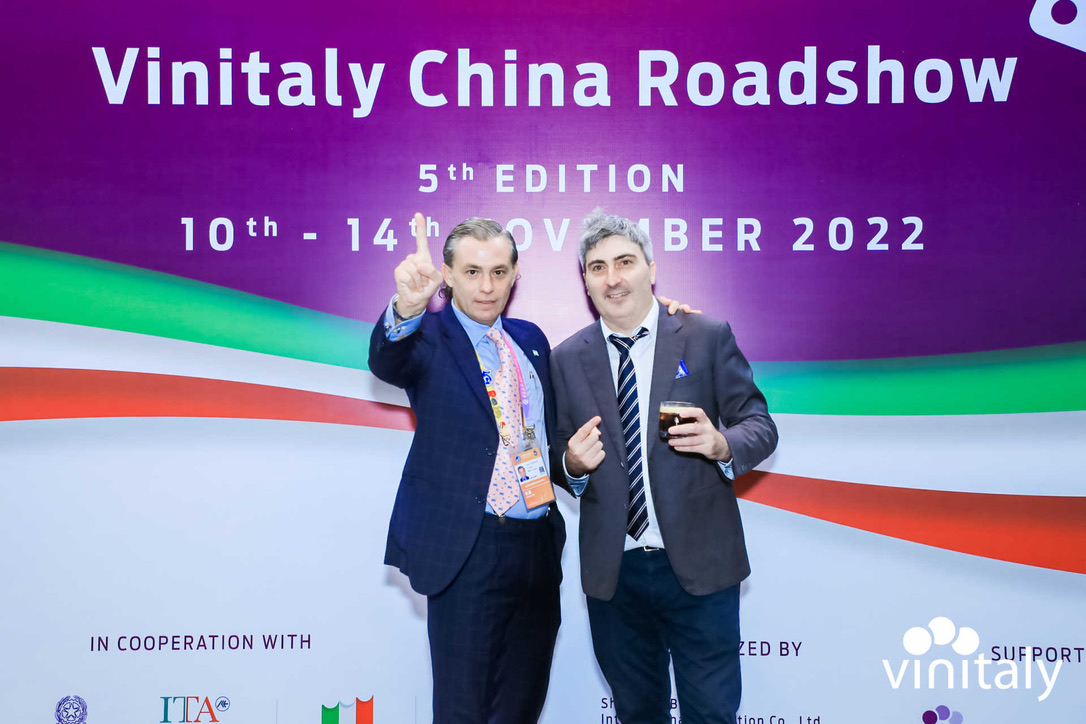
Postigo at the 2022 Vinitaly China Roadshow. Image via Maxi Postigo
“These are malbec from Argentina, cabernet sauvignon from Napa Valley, tempranillo from Spain — not the wine that says ‘red wine.’
“These are USD4 to USD5 wines FOB (freight on board, meaning shipping not included). If you want to reach the tables of the middle class of China, you need to teach people how to drink malbec at home.
“Ultimately, the wine industry in China requires a lot of innovation and if you follow the classic pathways then you will struggle. You need to build your customer base, because volume is more important than your profit margins.”
Scan the QR codes for information about WeWine events (right) or to purchase wine and other products from BottlesXO (left).
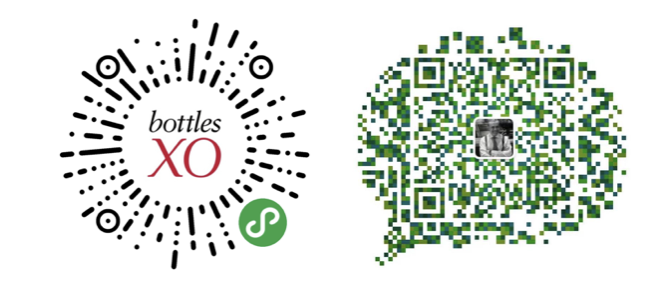
[Cover image via Maxi Postigo]





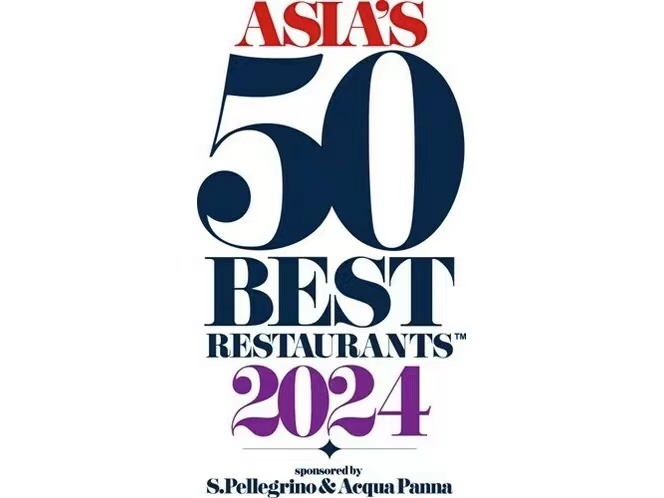

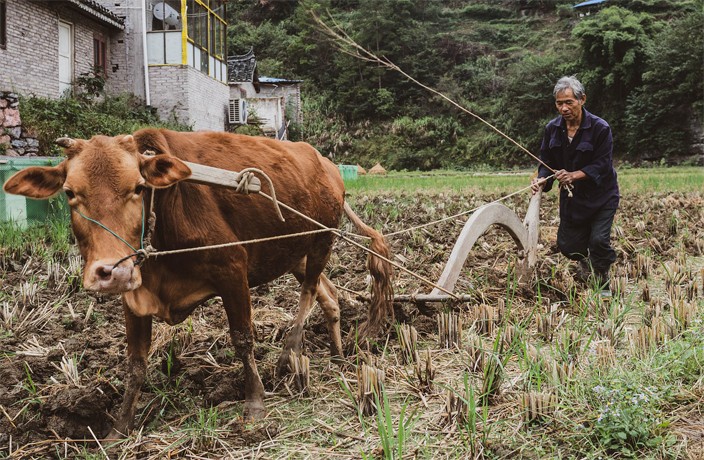














0 User Comments